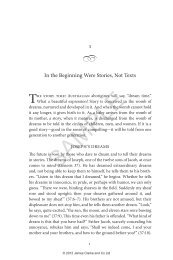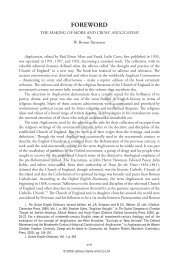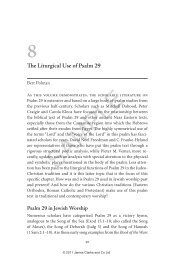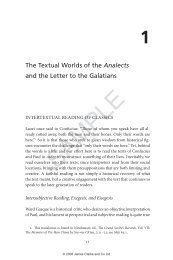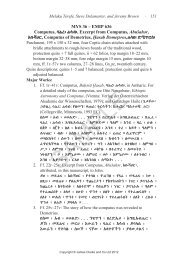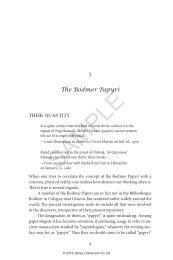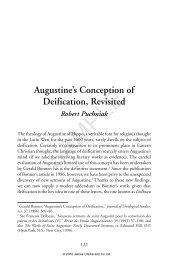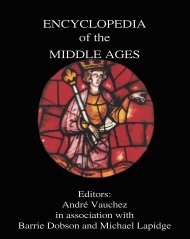Introduction by Kirk R. MacGregor - James Clarke and Co Ltd
Introduction by Kirk R. MacGregor - James Clarke and Co Ltd
Introduction by Kirk R. MacGregor - James Clarke and Co Ltd
You also want an ePaper? Increase the reach of your titles
YUMPU automatically turns print PDFs into web optimized ePapers that Google loves.
<strong>Introduction</strong><br />
PART ONE: BIBLICAL AND EXEGETICAL STUDIES<br />
In chapter one, Harold R. Holmyard III carefully draws together the exegetical<br />
threads of many Psalmic texts to argue that, while not explicitly<br />
formulated, the concept that those who belong to Yahweh will be preserved<br />
<strong>by</strong> Yahweh forever, rescuing them from even the murky prospects<br />
of the prevailing Ancient Near Eastern Sheol afterlife model, is clearly<br />
affirmed. <strong>Co</strong>ntra the Documentarian source dating of the origin of belief<br />
in general resurrection to the Second Temple Period, Holmyard finds<br />
provocative traces of resurrection belief in such Davidic Psalms as 16 (vv.<br />
9–10), 17 (vv. 14–15), 37 (vv. 10–13, 28–29, 35–38), <strong>and</strong> 49 (vv. 14–15).<br />
Furthermore, Holmyard examines the implications of the Hebrew vocabulary<br />
for “forever” to demonstrate that the righteous possess a permanent<br />
hope of consciously living in the presence of God beyond the grave (e.g.<br />
23:6; 25:3; 30:12; 41:12–13; 121:7–8). Holmyard’s panoramic treatment<br />
of the book of Psalms then turns to the eternality of God’s love toward<br />
his faithful ones (e.g. 118:1–4, 29; 136; 138:8), revealing that its unfailing<br />
nature logically entails the permanent existence of all its objects. Since the<br />
Hebrew Bible does not deal with the theological issue of persevering in the<br />
faith with the same directness as the New Testament, Holmyard employs<br />
canonical synthesis to, in light of later revelation, unpack the ramifications<br />
of Psalmic motifs <strong>and</strong> images as they pertain to salvific endurance.<br />
Here Holmyard persuasively makes the case that the Psalms proclaim<br />
a God who enables all genuinely devoted to the Shema to persevere in<br />
their convictions throughout life, through his empowerment (e.g. 27:2–6;<br />
31:19–24), forgiveness (e.g. 25:12–18; 40:4–12), care (e.g. 22:24; 36:5–7),<br />
<strong>and</strong> protection (e.g. 17:4–5; 37:17–28; 71:20; 91). For the Psalms simultaneously<br />
bestow assurance upon those struggling to endure <strong>and</strong> expect the<br />
righteous to endure, blossoming like a palm tree or cedar which continues<br />
to bear fruit into old age <strong>and</strong> so illuminating the majesty of God.<br />
Chapter two, authored <strong>by</strong> J. Ramsey Michaels, broadly examines the<br />
prism of eternal security texts in John through the laser of an exceptional<br />
text-critical treatment of John 10:28–30, which greatly strengthens the<br />
connotations of both this foundational passage <strong>and</strong> the larger theme<br />
it represents. Reasoning from st<strong>and</strong>ard principles of textual criticism,<br />
Michaels conclusively establishes the impossibility that the common<br />
tautological translation of verse 29, “My Father, who has given them to<br />
me, is greater than all, <strong>and</strong> no one can snatch them out of my Father’s<br />
SAMPLE<br />
xxi<br />
© 2011 <strong>James</strong> <strong>Clarke</strong> <strong>and</strong> <strong>Co</strong> <strong>Ltd</strong>





